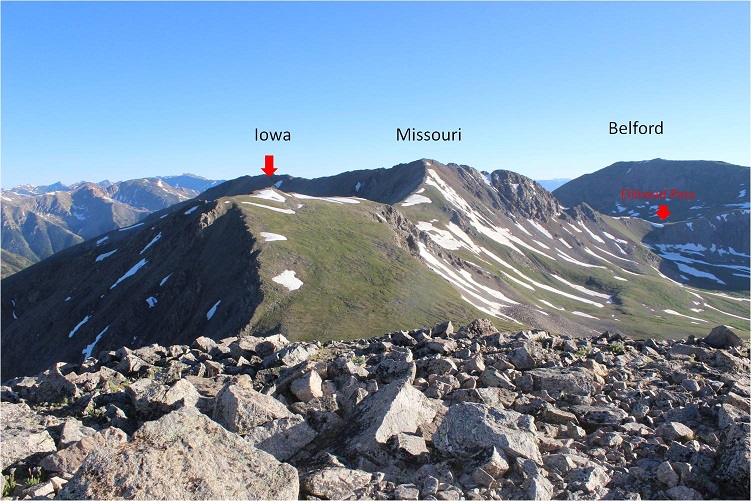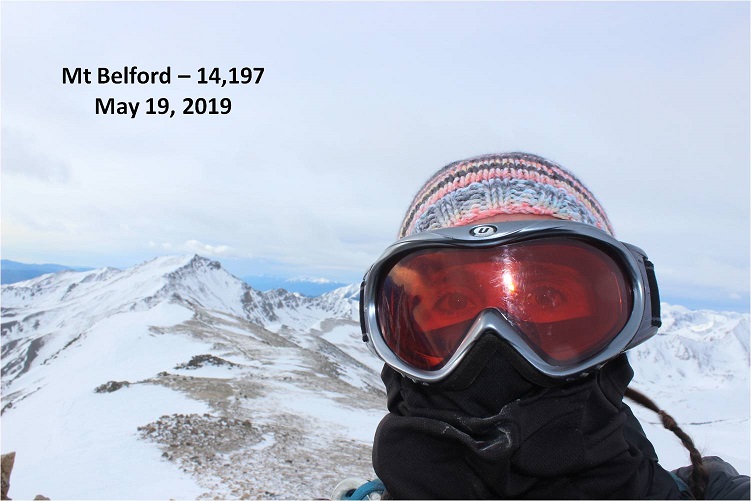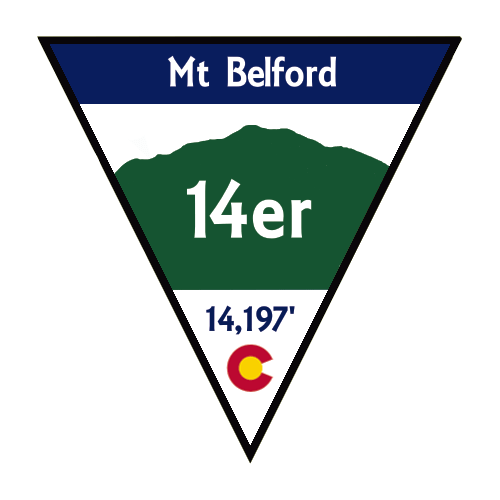
RT Length: 11.15.miles
Elevation Gain: 4764’
Note, this is the third time I’ve hiked Mt Belford, so this time I’ll just be giving a quick overview with a few pictures and thoughts. A full trip report can be found here for Mt Belford via Elkhead Pass, and here for Mt Belford and Mt Oxford in winter conditions.
Also note: whining ahead.
The last 3 miles to the Missouri Gulch trailhead were terrible! So bad I asked SkydiverHiker to drive. We were sliding in the ruts and eventually found a turnout about .7 miles from the trailhead and stopped there. This ended up being a fabulous idea, since the trailhead was too covered in snow to park. It looked like someone had tried and it took them quite a while to get out. This is the road to where we parked (easy until the plowing stopped)


Parking further away changed our plans a little, as it added an hour onto our trip. We decided we’d probably just hike Mt Belford today, and leave Oxford for another day. We were on the trail at 5:15am. Here’s a look at the Missouri Gulch Trailhead Parking area
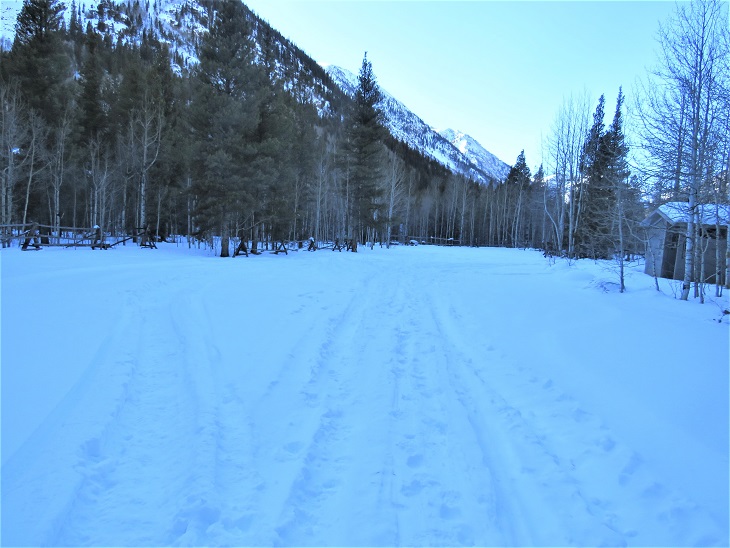
We crossed clear creek and started ascending the side of the mountain wearing microspikes. We saw some elk tracks here, but luckily, no mountain lion tracks this time.
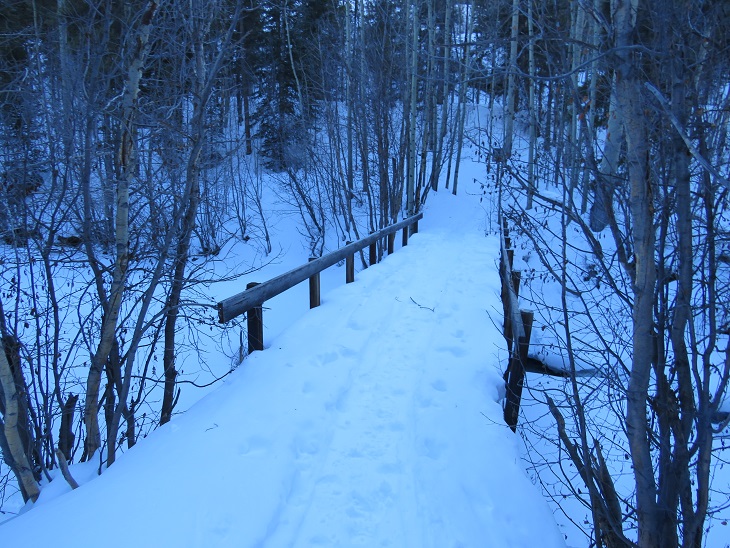
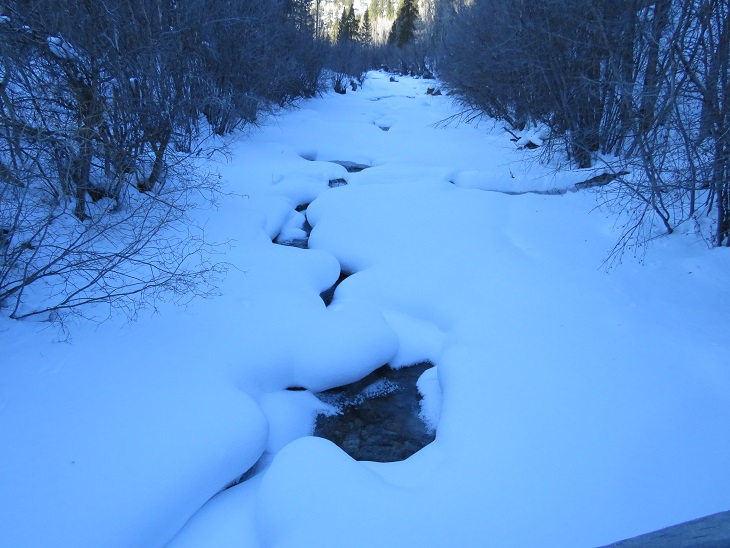

Once in the avalanche area the trench stopped. We crossed the drainage on some sketchy, snow covered logs

Then stopped for a bit to put on our snowshoes. These pictures were taken later in the day on our way back down, so you can see the trench. We put that trench in! I’ve done this hike several times, so I knew to aim for the trees, heading south
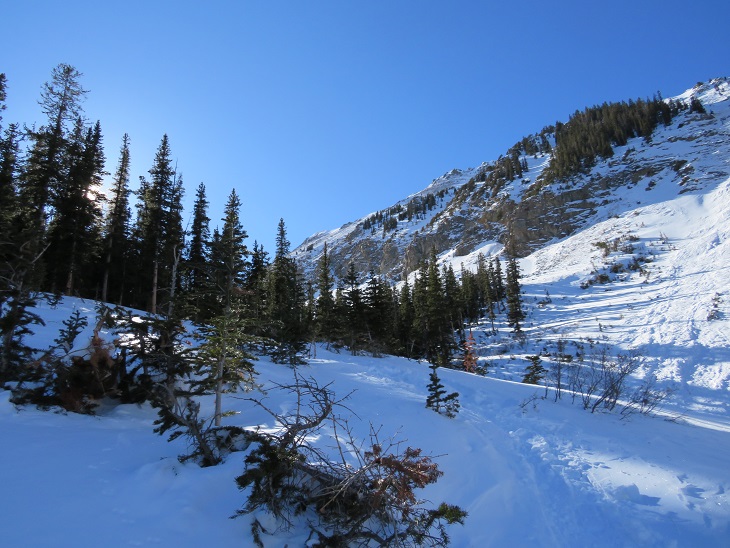
Once in the trees the trench picked up again until the cabin

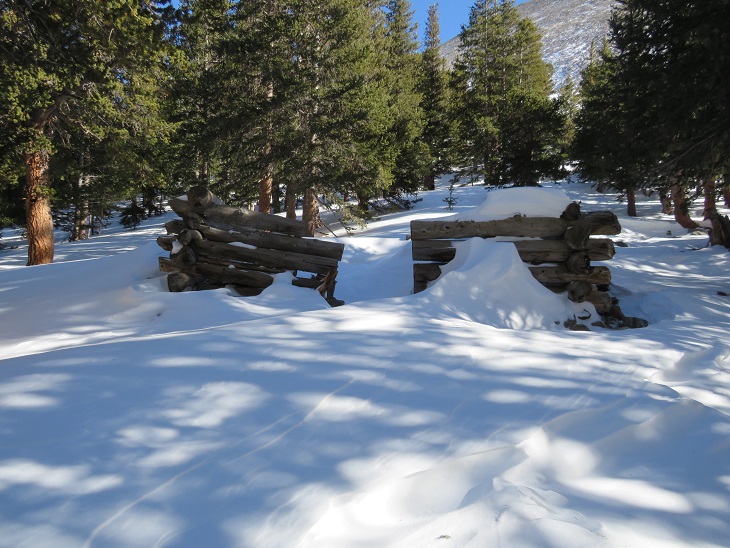
Once past the cabin the trench stopped again. The wind in the gulch is fierce and I’m sure blows away trenches nightly that are made during the day. No worries though, we just headed through the gulch (still wearing our snowshoes) towards Mt Belford’s Northwest Ridge
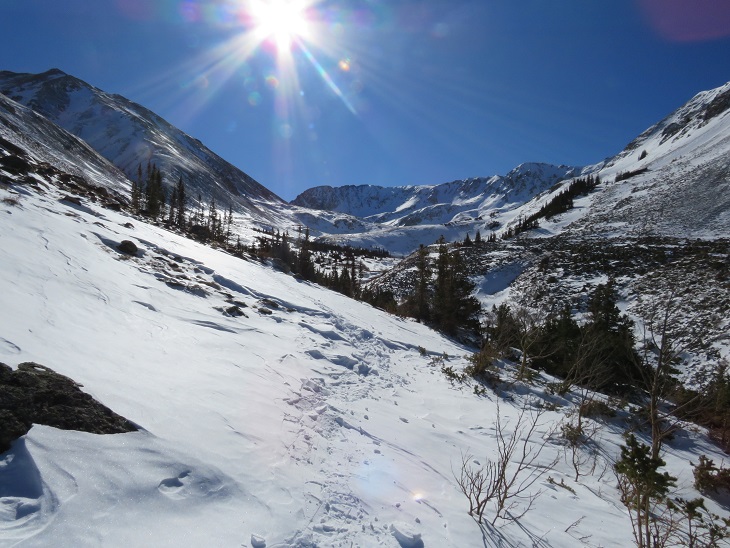
As we were trying (unsuccessfully) to avoid the willows, I heard ptarmigans chirping, but couldn’t see them. Then, all of the sudden, a ptarmigan busted out from under the snow and walked away. It was here I learned ptarmigans huddle near the willows and stay in their air pockets when it snows to stay warm. They can do this for days, as their food source is under the snow as well. It was so cool to hear them calling to each other throughout the day!
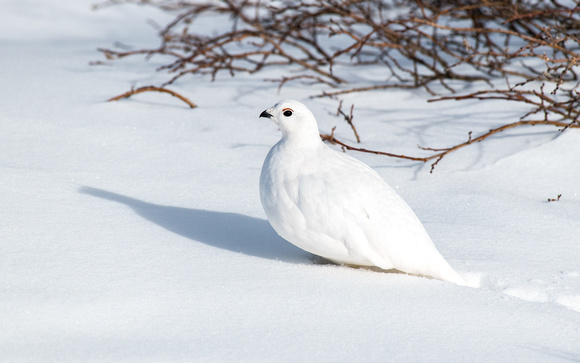
We continued through the basin, only taking our snowshoes off once we reached the ridge. From here we followed the ridge to the summit.
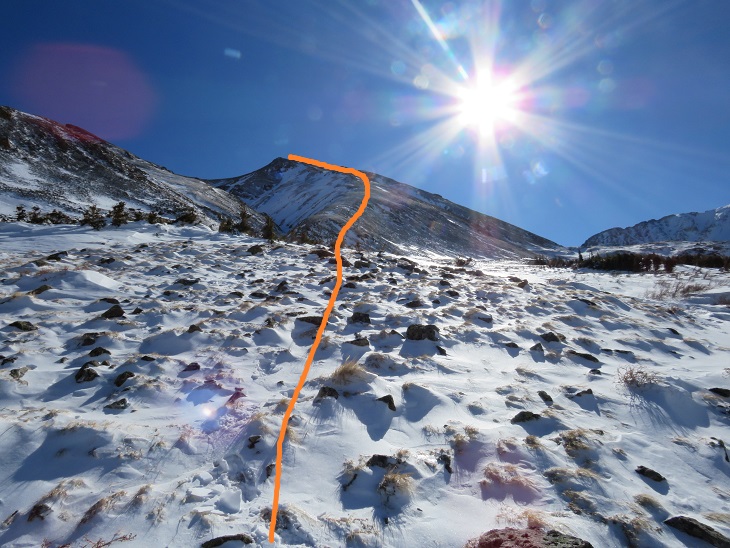
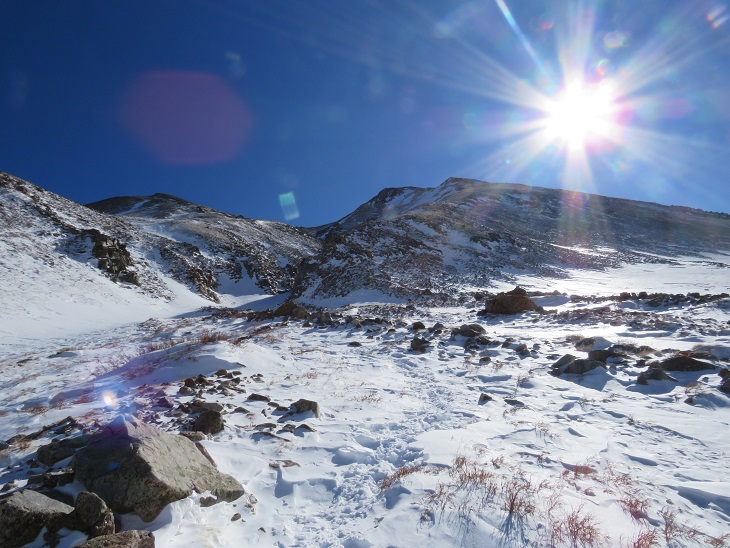
I’m making this sound MUCH easier than it was. This is probably one of my most difficult winter summits to date. With my Raynaud’s I need to keep moving to stay warm, and while SkydiverHiker was doing an excellent job keeping up, we still stopped more than my body would have liked. In fact, about halfway up the ridge I was seriously thinking about turning back: my fingers and toes were burning and the wind was more intense than predicted. With windchill it was at least -20 degrees. We discussed turning back, and decided to continue on (Skydiver Hiker needed a ‘win’ today, and I wouldn’t let him go on without me). SkydiverHiker dropped his and we continued on up the ridge. I continued with my pack because I had an ice axe and essential gear. This continuing on included a lot of intense feelings and emotions, and there was some crying involved and also some nausea. Have you ever hurt so much you felt nauseous? Both SkydiverHiker and I felt that way today. But at least the pain told me I hadn’t lost anything to frostbite. While mountaineering is certainly physical, it’s emotional and a mind game you play with yourself as well. I felt as if I were dying every step of the way, not because I was tired, but because I felt my fingers and toes were on fire. I was dry sobbing at times.
We trudged to the top, where my camera stopped working (I really need to find a better cold-weather camera) so the photos we have are SkydiverHikers from his phone. About 20 yards from the summit SkydiverHiker laid down and didn’t want to get up. I didn’t know this, but his back had been really, really hurting him. This laying down right now was (of course) unacceptable, so I made him get up and lead the way to the summit.
We didn’t stay long, just long enough to get a photo of the summit marker, and then we were on our way back down.


Let me pause here to show you the great views of Missouri Mountain
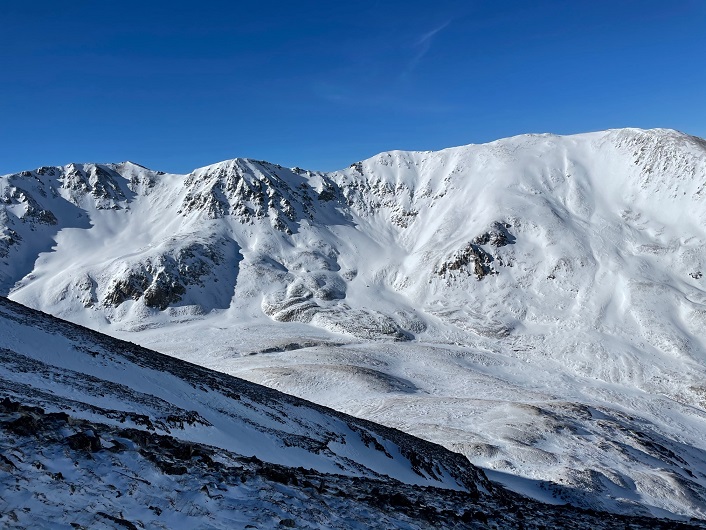
The screaming and crying continued until we made it to where we were hiking in sunlight, near the base of the ridge. It’s amazing how the warmth of the sun made me feel better, even when it was still well below freezing. Once at the base of the ridge we donned our snowshoes once again and headed back out of the gulch, following our morning trail.

As we warmed up our spirits lifted and we were once again thrilled to be out here hiking. This is one of the most beautiful places in Colorado to hike, and we had it all to ourselves. Well, it was us and the chirping ptarmigans. We hiked back past the cabin and through the avalanche area, took off our snowshoes, and continued back to the trailhead in better spirits. Yes, this is a mental game.

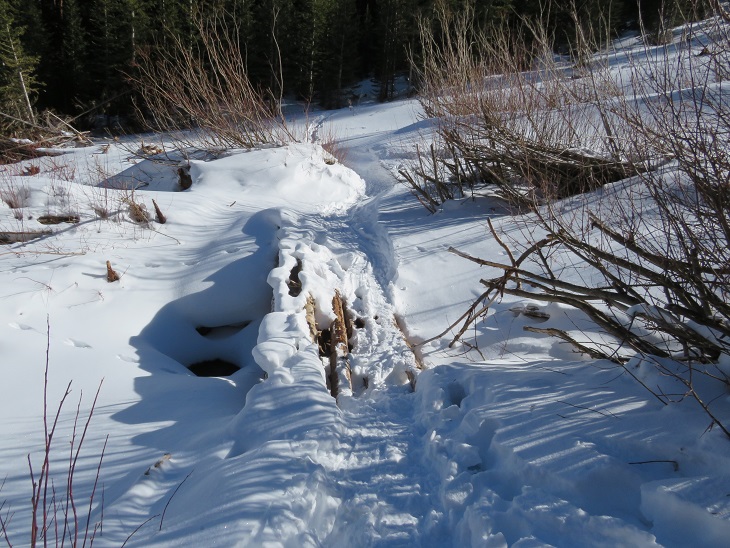
We made it back to the truck at 1:15pm, making this an 11.15 mile hike with 4764’ of elevation gain in 8 hours.

Summit Sticker can be bought here

























